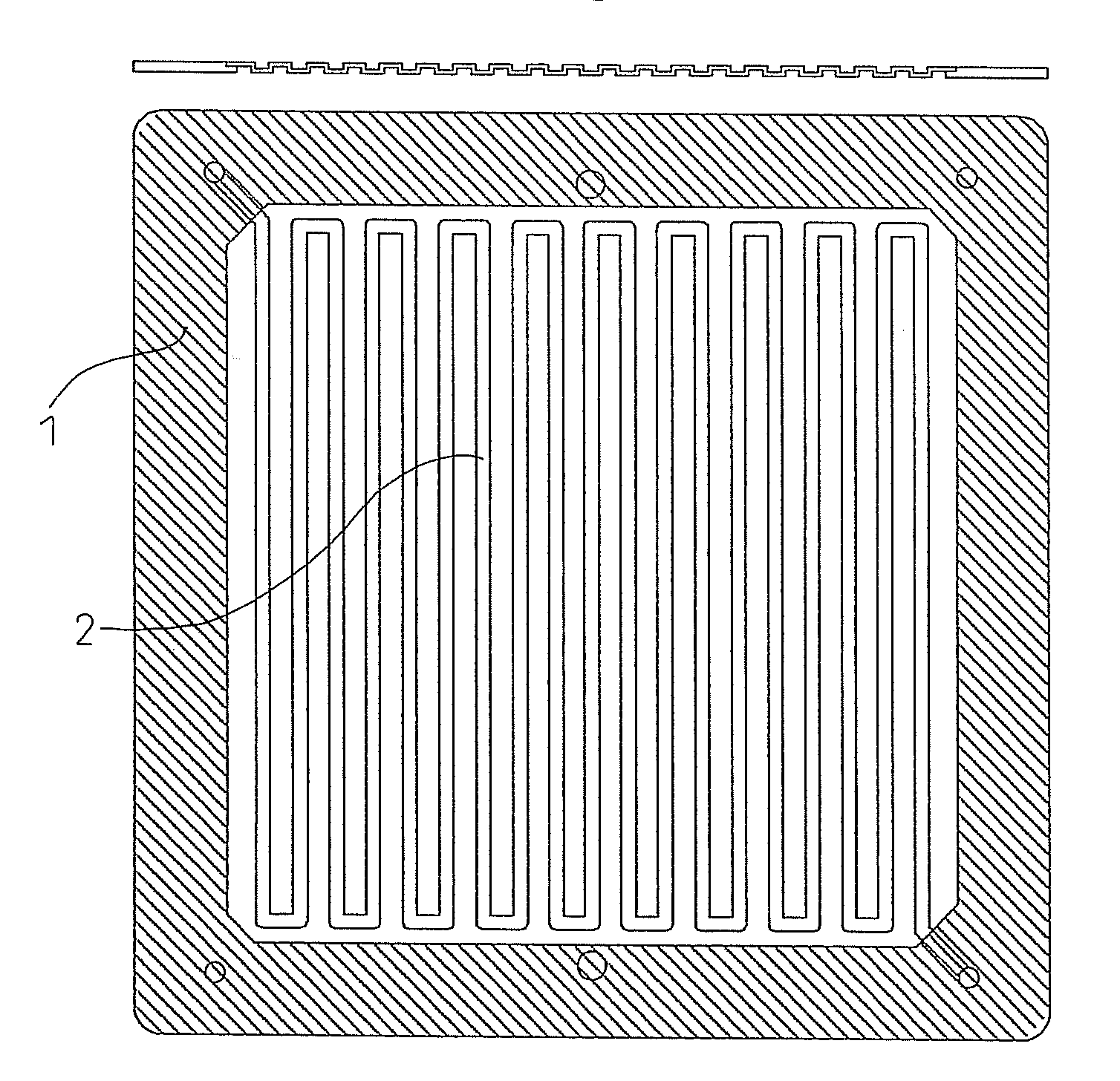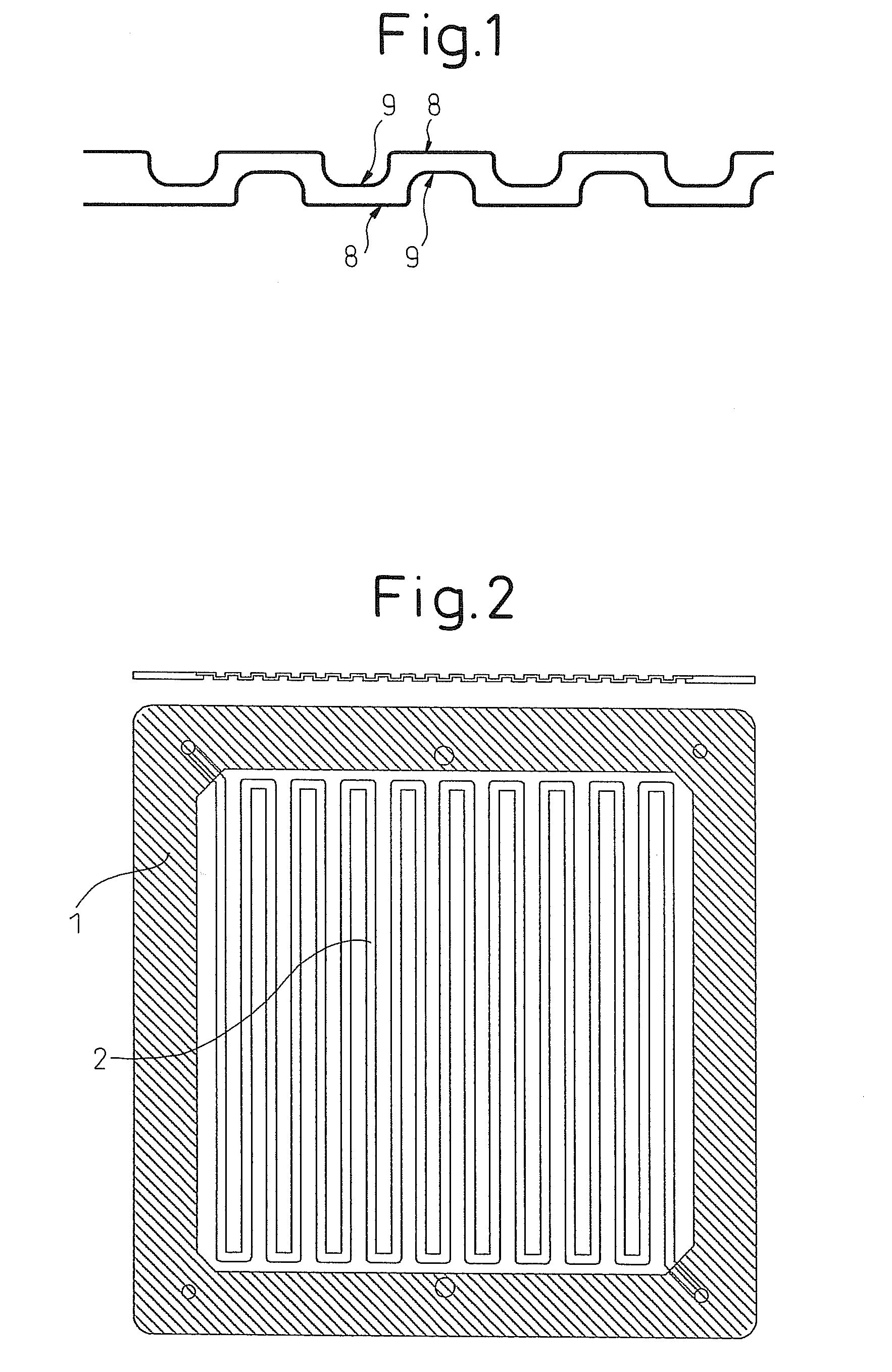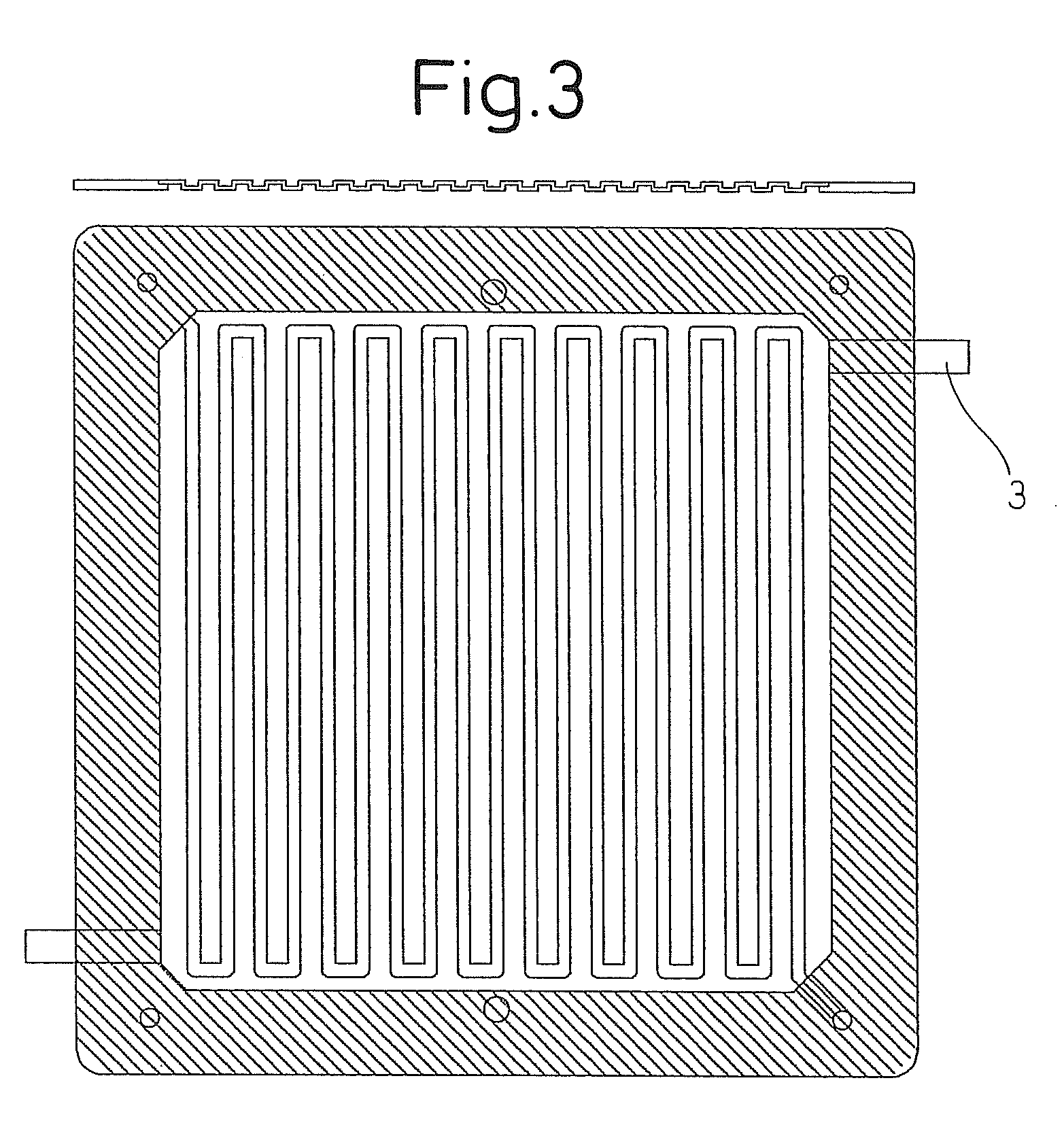Separator for fuel cell, single cell unit for fuel cell, short stack unit for fuel cell, and production methods of separator for fuel cell and cell unit (single cell unit or short stack unit) for fuel cell
a technology of fuel cell and separator, which is applied in the direction of cell components, final product manufacturing, sustainable manufacturing/processing, etc., can solve the problems of easy brittle destruction, long time-consuming firing, and corrosion resistance, and achieve the effect of enhancing the characteristics of a fuel cell and achieving inexpensive high-performance fuel cells
- Summary
- Abstract
- Description
- Claims
- Application Information
AI Technical Summary
Benefits of technology
Problems solved by technology
Method used
Image
Examples
example 1
[0236]As the carbonaceous material, a non-needle coke, MC Coke, produced by MC Carbon K.K. was coarsely ground to a size of 2 to 3 mm by a pulverizer (manufactured by Hosokawamicron Corp.), and the coarsely ground product was finely ground by a jet mill (IDS2UR, manufactured by Nippon Pneumatic Mfg. Co., Ltd.) and then adjusted to a desired particle diameter by classification. The particle of 5 μm or less was removed by air classification using a turbo-classifier (TC15N, manufactured by Nisshin Engineering Inc.). Subsequently, 0.15 kg of boron carbide (B4C) was added to a part (14.85 kg) of the finely ground product after the adjustment above and mixed in a Henschel mixer at 800 rpm for 5 minutes, and 1 kg of the mixture was sealed into a 1.5 liter-volume graphite crucible with a cover. The crucible was then placed in a graphitizing furnace with a graphite heater and after the inside of the furnace was once vacuumized and replaced with an argon gas, the powder was graphitized at an ...
example 2
[0248]As the carbonaceous material, a non-needle coke, MC Coke, produced by MC Carbon K.K. was coarsely ground to a size of 2 to 3 mm by a pulverizer (manufactured by Hosokawamicron Corp.), and the coarsely ground product was finely ground by a jet mill (IDS2UR, manufactured by Nippon Pneumatic Mfg. Co., Ltd.) and then adjusted to a desired particle diameter by classification. The particle of 5 μm or less was removed by air classification using a turbo-classifier (TC15N, manufactured by Nisshin Engineering Inc.). Subsequently, 0.75 kg of vapor grown carbon fiber (hereinafter simply referred to as “VGCF”, registered trademark of Showa Denko K.K.) and 0.15 kg of boron carbide (B4C) were added to a part (14.1 kg) of the finely ground product after the adjustment above and mixed in a Henschel mixer at 800 rpm for 5 minutes, and 1 kg of the mixture was sealed into a 1.5 liter-volume graphite crucible with a cover. The crucible was then placed in a graphitizing furnace with a graphite hea...
example 3
[0253]As the carbonaceous material, 14.85 kg of natural graphite (high-purity natural graphite ACP, produced by Nippon Graphite Industries, Ltd., average particle diameter: 24 μm) and 0.15 kg of boron carbide (B4C) were added and mixed in a Henschel mixer at 800 rpm for 5 minutes. Subsequently, 1 kg of the mixture was sealed into a 1.5 liter-volume graphite crucible with a cover, the crucible was then placed in a graphitizing furnace with a graphite heater and after the inside of the furnace was once vacuumized and replaced with an argon gas, the powder was graphitized at an inner pressure of 1.2 atm and a temperature of 2,800° C. under a stream of argon gas atmosphere. The powder was further left standing to cool in an argon gas atmosphere and then taken out to obtain 0.93 kg of Graphite Fine Powder (A3).
[0254]Thereafter, 50 mass % of Graphite Fine Powder (A1) produced in Example 1, 35 mass % of Graphite Fine Powder (A3, natural graphite), 13.2 mass % of polypropylene (SunAllomer (...
PUM
| Property | Measurement | Unit |
|---|---|---|
| mass ratio | aaaaa | aaaaa |
| thickness | aaaaa | aaaaa |
| volume resistivity | aaaaa | aaaaa |
Abstract
Description
Claims
Application Information
 Login to View More
Login to View More - R&D
- Intellectual Property
- Life Sciences
- Materials
- Tech Scout
- Unparalleled Data Quality
- Higher Quality Content
- 60% Fewer Hallucinations
Browse by: Latest US Patents, China's latest patents, Technical Efficacy Thesaurus, Application Domain, Technology Topic, Popular Technical Reports.
© 2025 PatSnap. All rights reserved.Legal|Privacy policy|Modern Slavery Act Transparency Statement|Sitemap|About US| Contact US: help@patsnap.com



